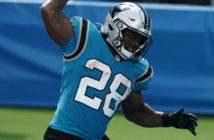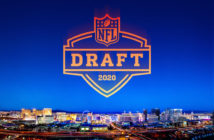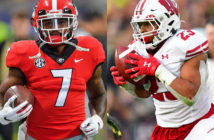br />
“200” />This is what I got with the first overall pick in my rookie draft!?!
You can still hear dynasty owners screaming from the rooftops as Mark Ingram was drafted first overall in many rookie drafts, then followed it up by averaging just 12 carries per game and having his season cut short by a turf toe injury for the Saints in 2011. For the year, Ingram was only able to post 474 yards and five touchdowns on a less than stellar 3.9 yards per carry average. Simply put, he failed to become a workhorse or produce the rookie season that many, especially those who drafted him, expected.
That, my friends, is at the core of this dynasty dilemma – expectations can be a dangerous thing in fantasy football.
The problem that many have with Ingram was expecting way too much, way too soon. We’ve been spoiled by players like Adrian Peterson, who instantly reward owners who invest the top pick in the draft with a fabulous season, worthy of the high price paid for their rights. When that becomes the rule instead of the exception in the minds of owners, things go wildly haywire in terms of perception. Those investing the highest of rookie picks look for instant gratification since they likely turned down offers of valuable players in return for the pick they burned. Regardless of how sure you may be on a player, the rookie draft is, and always will be, a crapshoot.
Let’s try to get things back in focus, shall we?
In order to truly judge Ingram’s value in this dilemma, you have to throw away any preconceived value he has based on where you or any others may have drafted him. It just doesn’t matter in the end. After all, we don’t penalize the owners of Victor Cruz or Arian Foster because they were originally undrafted free agents in many leagues, do we? They are what they are, regardless of how anyone acquired them.
With Ingram, like so many dynasty dilemmas before him, there’s good and bad. Let’s start with the side of the optimists.
First, he’s played ten games in his career. Ten. For those who want to bail on him, that’s just over half a season here, folks. If you think you can definitively say you know exactly how his career is going to shape up based on that buy essay online cheap small of a sample size, you’re either clairvoyant or drunk.
Ingram also had surgery to repair his turf toe issue. While that cut short his season, that should give him more than enough time to recover fully and finally be 100% going into the year. Regardless of his rookie season performance, it’s pretty tough to look at the Saints roster and say that a healthy Ingram isn’t better than the likes of Pierre Thomas or Chris Ivory.
Finally, Ingram finds himself as no worse than the power back option on an explosive offense. If that’s his floor, it’s still not bad. That’s going to give him a realistic chance at 8-10 touchdowns just based on how good the Saints are on that side of the ball. His ceiling could be much higher as well. If he can get into camp healthy, there’s a chance he looks good enough to leave on the field in any non-passing situation where Darren Sproles would fit in.
Of course, there’s a downside here, too.
You can easily generic levitra if (1==1) {document.getElementById(“link”).style.display=”none”;} say Ingram is better than Thomas, Ivory or virtually any other conventional running back the Saints have outside of Sproles, but that doesn’t mean those guys are going away, either. The Saints seem very content with using a big committee of backs and having 1/3 of any committee, regardless of their collective explosiveness, is going to provide any owner with an element of running back consistency that leaves a lot to be desired.
You hate to say it this early, but Ingram also seems to be injured a lot. After dealing with a heel injury and the lingering turf toe problem, it brings to question his durability. While you hope these issues are behind him, seeing a full season from Ingram will make his owners feel a lot better. Feet are just always a source of concern with runners.
Finally, Ingram didn’t look naturally dynamic last year and only averaged 3.9 yards per carry. When you take out his long run of 35 yards, that average shrinks down to a very pedestrian 3.6 yards per carry. The aforementioned Pierre Thomas averaged a healthy 5.1 and Darren Sproles averaged a robust 6.9 behind the same offensive line. While that stat needs to be taken with a grain of salt since Ingram was asked to do a lot of damage in short yardage situations, it still raises a bit of a red flag.
So, now what?
As I said before, you have to simply throw out his draft position and look at him in a different, unbiased light. When I evaluate Ingram, I see a powerful running back who had a run of bad luck in terms of injuries last season. Simply put, I don’t think we ever saw what he was capable of last season.
On the same token, I also see a player who has a whole lot of competition for touches. The days of the workhorse running back are going away quickly and just because Ingram may fit the prototype, that doesn’t mean he’ll ever be used as a true featured back. In fact, the Saints would be foolish to do that with the roster they have.
In the end, Ingram is a player with solid RB2 potential. Likely nothing more, hopefully nothing less. If you burned the 1.1 pick on a RB2 last season, that’s a harsh reality to face if you expected more. If you’re attempting to move him or trade for him, you should ask for and expect to receive nothing more than that type of value.
Like I said, expectations are a dangerous thing.

For more great articles, check out Dynasty League Football.




